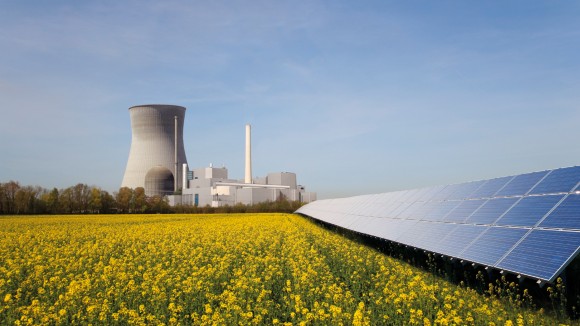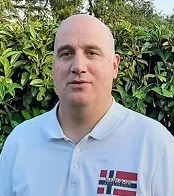 Francis Claret is a deputy head of the Water, Environment, Process Development and Analysis Division at BRGM, the French geological survey. His own research focuses on the understanding of minerals/water/gas reactivity in the context of nuclear waste disposal by: (i) applying experimental techniques at the laboratory scale taking advantage of synchrotron techniques, and (ii) integrating this information in large scale modeling studies using most advanced reactive transport codes. Dr Claret has been an Editorial Board Member for Scientific Reports since 2022.
Francis Claret is a deputy head of the Water, Environment, Process Development and Analysis Division at BRGM, the French geological survey. His own research focuses on the understanding of minerals/water/gas reactivity in the context of nuclear waste disposal by: (i) applying experimental techniques at the laboratory scale taking advantage of synchrotron techniques, and (ii) integrating this information in large scale modeling studies using most advanced reactive transport codes. Dr Claret has been an Editorial Board Member for Scientific Reports since 2022.
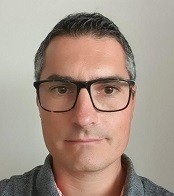 Nicolas Clavier is a CNRS Research Director at the Marcoule Institute in Separation Chemistry. His research focuses on ceramic materials of interest for the nuclear fuel cycle, including actinides-based oxides, phosphates or silicates. His work covers both the synthesis of ceramic powders, their sintering, the evaluation of in-use properties, and the reprocessing of the materials. Dr Clavier has been an Editorial Board Member for Scientific Reports since 2022.
Nicolas Clavier is a CNRS Research Director at the Marcoule Institute in Separation Chemistry. His research focuses on ceramic materials of interest for the nuclear fuel cycle, including actinides-based oxides, phosphates or silicates. His work covers both the synthesis of ceramic powders, their sintering, the evaluation of in-use properties, and the reprocessing of the materials. Dr Clavier has been an Editorial Board Member for Scientific Reports since 2022.
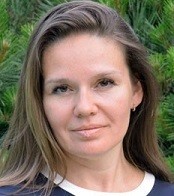 Kristina Kvashnina is the group head at the Rossendorf Beamline of the European Synchrotron in France. Her research interest is focused on actinide/lanthanide nanomaterials to better understand the fundamental properties and to find a safe long-term solution for radioactive waste. Dr Kvashnina has been an Editorial Board Member for Scientific Reports since 2022.
Kristina Kvashnina is the group head at the Rossendorf Beamline of the European Synchrotron in France. Her research interest is focused on actinide/lanthanide nanomaterials to better understand the fundamental properties and to find a safe long-term solution for radioactive waste. Dr Kvashnina has been an Editorial Board Member for Scientific Reports since 2022.
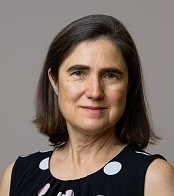 Tatiana Levitskaia is a Chemist and Radiochemical Science Team Leader at the Pacific Northwest National Laboratory. Her research interests encompass properties of actinides, lanthanides, and fission products, specifically related to the development of separation processes for the nuclear fuel cycle, legacy waste processing, critical material recovery, and subsurface remediation. Dr Levitskaia has been an Editorial Board Member for Scientific Reports since 2022.
Tatiana Levitskaia is a Chemist and Radiochemical Science Team Leader at the Pacific Northwest National Laboratory. Her research interests encompass properties of actinides, lanthanides, and fission products, specifically related to the development of separation processes for the nuclear fuel cycle, legacy waste processing, critical material recovery, and subsurface remediation. Dr Levitskaia has been an Editorial Board Member for Scientific Reports since 2022.
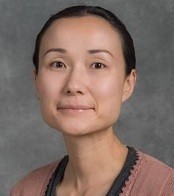 Haruko Wainwright is an assistant professor for the Department of Nuclear Science and Engineering at the Massachusetts Institute of Technology. Her research focuses on environmental informatics for integrating monitoring data analytics and simulations, with a particular emphasis on nuclear waste and nuclear-related contamination. She has been pioneering Bayesian methods for multi-type multiscale data integration and model-data integration. Dr Wainwright has been an Editorial Board Member for Scientific Reports since 2022.
Haruko Wainwright is an assistant professor for the Department of Nuclear Science and Engineering at the Massachusetts Institute of Technology. Her research focuses on environmental informatics for integrating monitoring data analytics and simulations, with a particular emphasis on nuclear waste and nuclear-related contamination. She has been pioneering Bayesian methods for multi-type multiscale data integration and model-data integration. Dr Wainwright has been an Editorial Board Member for Scientific Reports since 2022.
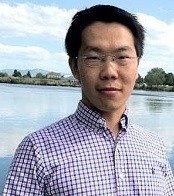 Tiankai Yao is a material scientist for the Idaho National Laboratory in the United States. Dr Yao’s research covers the synthesis, irradiation, and advanced characterization of nuclear fuel and waste-related materials. Dr. Yao’s research expertise ranges from spark plasma sintering, arc melting, high energy ball milling, in-situ ion irradiation; neutron irradiation; transmission electron microscopy; and x-ray/TEM/atom probe tomography. Dr Yao has been an Editorial Board Member for Scientific Reports since 2022.
Tiankai Yao is a material scientist for the Idaho National Laboratory in the United States. Dr Yao’s research covers the synthesis, irradiation, and advanced characterization of nuclear fuel and waste-related materials. Dr. Yao’s research expertise ranges from spark plasma sintering, arc melting, high energy ball milling, in-situ ion irradiation; neutron irradiation; transmission electron microscopy; and x-ray/TEM/atom probe tomography. Dr Yao has been an Editorial Board Member for Scientific Reports since 2022.

